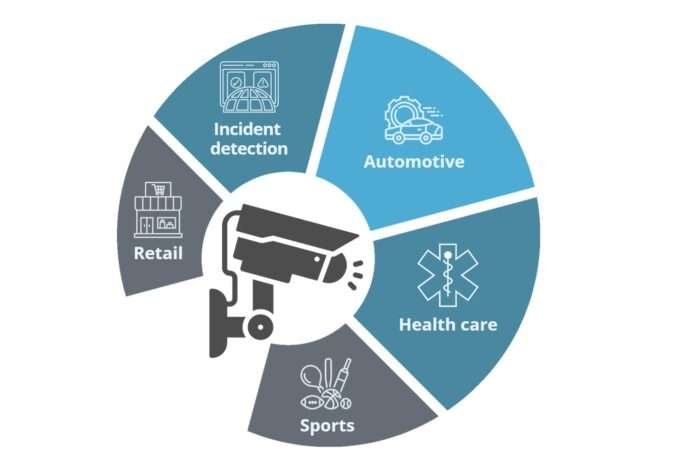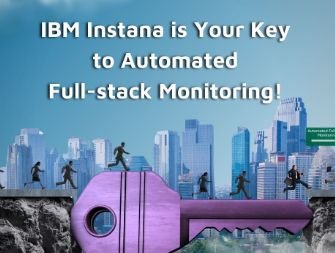By Ambuj Nandanwar, Softnautics
In recent times, video analytics based media solutions has emerged as cutting-edge technology that has revolutionized the interpretation and analysis of video data. Utilizing advanced algorithms and Artificial Intelligence (AI), video analytics enables real-time tracking and automated detection of objects, events, and behaviours, providing valuable insights and enhancing security in various industries. According to a recent report from Verified Market Research Group, the global video analytics market is projected to reach a value of USD 35.88 billion by 2030, with a compound annual growth rate (CAGR) of 21.5% from its valuation of USD 5.65 billion in 2021, indicating a growing demand for video analytics solutions as organizations prioritize security and surveillance systems.
Video analytics is closely intertwined with video processing, as it involves extracting meaningful information from video data through computational techniques. By leveraging the capabilities of video processing, video analytics enables devices/computers to automatically detect, track, and understand objects, events, and patterns within video streams. Video processing plays a crucial role in computer vision, a field of study focused on enabling computers to interpret visual information akin to human perception and understanding. Video processing techniques find applications in diverse domains such as surveillance, video streaming, multimedia communication, autonomous vehicles, medical imaging, entertainment, and virtual reality, among others.
The technologies utilized in video analytics encompass various image-processing techniques. One commonly used approach is OpenCV, an open-source library designed specifically for image-processing tasks. OpenCV offers a wide range of image-processing algorithms implemented in Java, C++, and Python. Another technique employed in image processing is TensorFlow, an open-source machine learning (ML) library developed by Google. TensorFlow is capable of high-accuracy object detection, utilizing neural network-based approaches and leveraging pre-trained models from image databases like ImageNet and AlexNet.
In real-world scenarios, identifying and tracking specific objects can provide valuable insights and understanding of their movements, a concept that applies to computer vision as well that helps automate processes. This article will delve into industrial applications and use cases of video analytics across various domains.
Industrial Applications of Video Analytics
Automotive
The automotive industry heavily relies on video analytics for The Advanced Driver Assistance System (ADAS) in highly-automated vehicles (HAVs). HAVs utilize multiple cameras to identify pedestrians, traffic signals, other vehicles, lanes, and other indicators, which are then integrated with the Electronic Control Unit (ECU) and programmed to respond in real time to the situation. This process requires various System on a Chip (SoC) to be integrated, enabling actuators to connect with sensors through interfaces and ECUs. Deep learning algorithms, a subset of machine learning (ML) that utilizes neural networks to learn patterns in data, are employed for data analysis. Neural networks are structured with interconnected processing nodes in multiple layers. These deep learning algorithms are used for object detection, tracking, and recognition of specific actions in videos.
In ADAS systems, relying solely on remote servers to process the data is not feasible. Each camera is integrated into the vehicle, covering all angles, and is responsible for taking quick actions to ensure the safety and efficiency of the system.
Sports
In the sports industry to optimize performance through data-driven insights. Metrics like ball possession and pass count are commonly tracked in sports like rugby and soccer to understand game patterns and team performance. A research indicates that analyzing ball possession can even influence the outcome of soccer games. Video analytics provides insights into opponent teams’ playing styles, strategies, passing patterns, and weaknesses, enhancing understanding of their gameplay for better preparation.

Video Analytics Application
Smart Cities
Smart cities across the world are leveraging the power of Artificial Intelligence (AI) to effectively manage and optimize valuable physical assets and spaces. IoT sensors, combined with video analytics powered by AI and Deep Learning Machine Learning, are playing a crucial role in providing real-time actionable insights in these cutting-edge urban environments.
A new wave of AI applications is currently emerging, harnessing the scalability and potential of video analytics driven by deep learning. These state-of-the-art AI-enabled applications are revolutionizing operational efficiency and safety in diverse environments such as streets, toll booths, and parking lots. By leveraging the power of video combined with advanced analytics, smart cities are experiencing a paradigm shift in how they manage and optimize their infrastructure, leading to more sustainable and intelligent urban ecosystems.
Health Care
Video analytics has emerged as a revolutionary technology in the healthcare field, delivering significant advantages in patient care and operational efficiency. By leveraging state-of-the-art machine learning algorithms and computer vision, these systems can analyze video data in real time, automatically detecting and interpreting various events, behaviors, and anomalies. In healthcare settings, video analytics finds diverse applications, including monitoring patient movements, detecting falls or emergencies, identifying wandering behavior in dementia patients, monitoring hand hygiene compliance, and analyzing crowd behavior in waiting areas.
These capabilities empower healthcare providers to proactively address potential issues, optimize resource allocation, and enhance patient safety, ultimately resulting in improved patient outcomes and a higher quality of care. As technology continues to advance, video analytics is poised to play a pivotal role in shaping the future of healthcare, making it more intelligent, efficient, and patient-centric.
Retail
Enhancing Customer Experience: How Intelligent Video Analytics Benefits Retailers
Intelligent video analytics is proving to be a valuable tool for retailers in monitoring storefront events and proactively responding to improve the overall customer experience. Real-time video captured by strategically placed cameras, covering areas such as shelf inventory, curbside pickup, and cashier queues, is analyzed by on-site IoT Edge devices in real-time to extract key metrics.
These metrics, such as the number of people in checkout queues, empty shelf space, or cars in the parking lot, are analyzed to detect anomaly events that may require corrective action. Store managers or stock supervisors can be alerted promptly to take necessary measures, ensuring smooth operations and optimal customer service.
Furthermore, summary video clips or events can be stored in the cloud for long-term trend analysis, providing valuable insights for future decision-making. This enables retailers to leverage historical data and trends to make informed decisions, optimize store layouts, improve inventory management, and enhance the overall shopping experience for their customers. Intelligent video analytics is thus becoming an indispensable tool for retailers to stay ahead in the dynamic retail landscape and deliver exceptional customer satisfaction.
Security
Video analytics plays a crucial role in intrusion management by helping security systems. Through facial analysis, video analytics can automatically detect and alert security personnel about unauthorized access in restricted areas, such as secured facilities or private property. This capability helps prevent security breaches, theft, and other unwanted activities. For example, in a corporate office, video analytics can detect intruders attempting to enter restricted areas and trigger the alarm system or send notifications to security personnel, enabling prompt response to prevent potential security threats.
Industrial Safety
Video analytics can play a critical role in ensuring worker safety in industrial environments. By analyzing motion/posture of workers, video analytics algorithms can automatically detect and alert about potential injuries, abnormality, and alert for safety. This capability helps prevent accidents and damages, ensuring compliance with safety regulations. Moreover, in a manufacturing plant, video analytics can detect workers not wearing proper safety gear, such as helmets or goggles, and send real-time alerts to supervisors or safety personnel, enabling timely intervention. Video analytics serves as a powerful tool in enhancing worker safety and maintaining a safe working environment in industrial settings.
In conclusion, video analytics is a rapidly growing field that leverages various technologies such as computer vision, deep learning, image and video processing, motion detection and tracking, and data analytics to analyze video content and extract valuable insights. Video analytics has found diverse applications in domains such as security and surveillance, healthcare, automotive, sports, and more. By automating the analysis of video data, organizations can efficiently process large amounts of visual information, identify patterns and behaviours, and make data-driven decisions in a more effective and cost-efficient manner.
If you wish to download a copy of this white paper, click here
Post Disclaimer
The information provided in our posts or blogs are for educational and informative purposes only. We do not guarantee the accuracy, completeness or suitability of the information. We do not provide financial or investment advice. Readers should always seek professional advice before making any financial or investment decisions based on the information provided in our content. We will not be held responsible for any losses, damages or consequences that may arise from relying on the information provided in our content.




